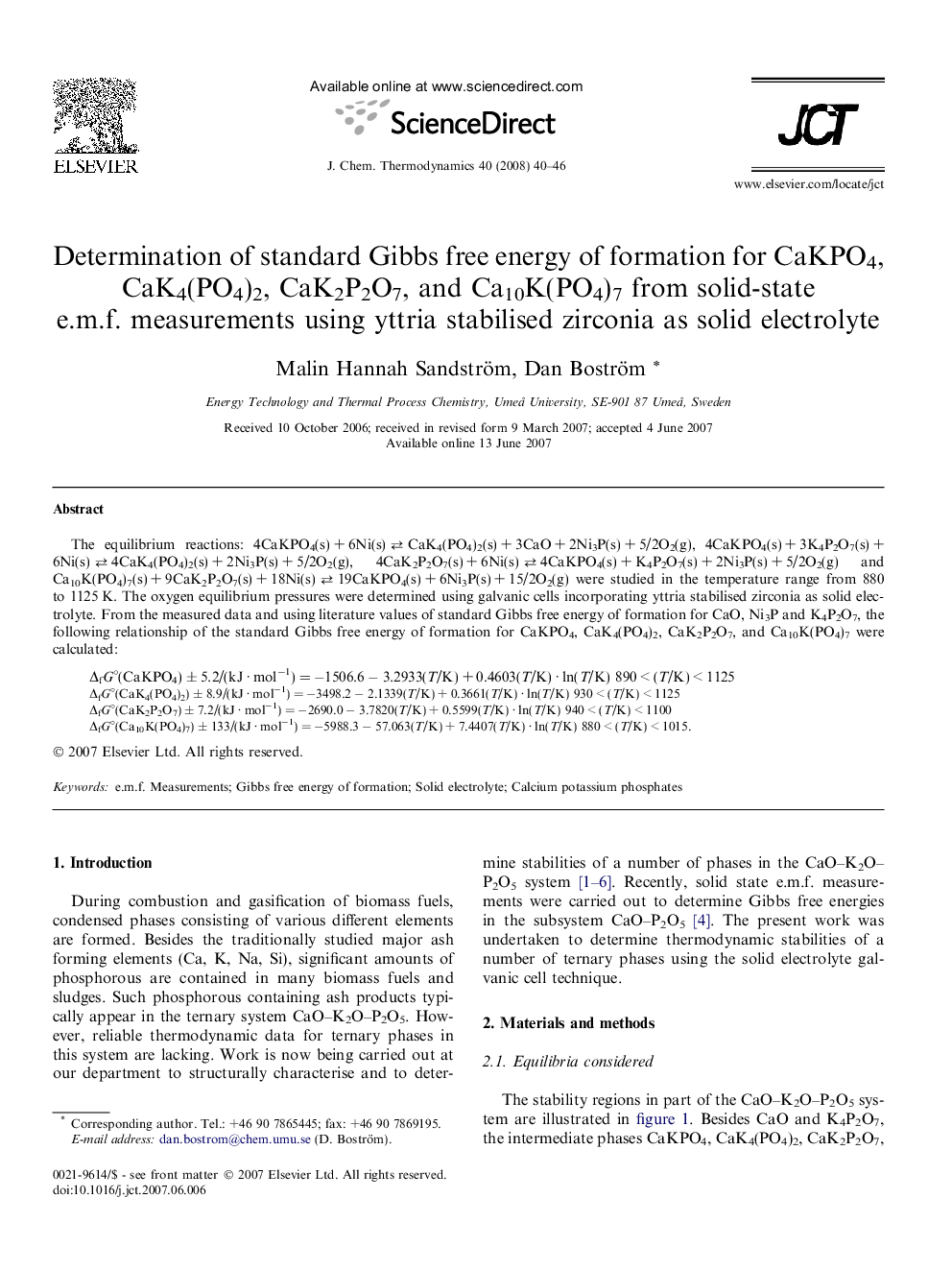| Article ID | Journal | Published Year | Pages | File Type |
|---|---|---|---|---|
| 217412 | The Journal of Chemical Thermodynamics | 2008 | 7 Pages |
The equilibrium reactions: 4CaKPO4(s) + 6Ni(s) ⇄ CaK4(PO4)2(s) + 3CaO + 2Ni3P(s) + 5/2O2(g), 4CaKPO4(s) + 3K4P2O7(s) + 6Ni(s) ⇄ 4CaK4(PO4)2(s) + 2Ni3P(s) + 5/2O2(g), 4CaK2P2O7(s) + 6Ni(s) ⇄ 4CaKPO4(s) + K4P2O7(s) + 2Ni3P(s) + 5/2O2(g) and Ca10K(PO4)7(s) + 9CaK2P2O7(s) + 18Ni(s) ⇄ 19CaKPO4(s) + 6Ni3P(s) + 15/2O2(g) were studied in the temperature range from 880 to 1125 K. The oxygen equilibrium pressures were determined using galvanic cells incorporating yttria stabilised zirconia as solid electrolyte. From the measured data and using literature values of standard Gibbs free energy of formation for CaO, Ni3P and K4P2O7, the following relationship of the standard Gibbs free energy of formation for CaKPO4, CaK4(PO4)2, CaK2P2O7, and Ca10K(PO4)7 were calculated:ΔfG∘(CaKPO4) ± 5.2/(kJ · mol−1) = −1506.6 − 3.2933(T/K) + 0.4603(T/K) · ln(T/K) 890 < (T/K) < 1125ΔfG∘(CaK4(PO4)2) ± 8.9/(kJ · mol−1) = −3498.2 − 2.1339(T/K) + 0.3661(T/K) · ln(T/K) 930 < (T/K) < 1125ΔfG∘(CaK2P2O7) ± 7.2/(kJ · mol−1) = −2690.0 − 3.7820(T/K) + 0.5599(T/K) · ln(T/K) 940 < (T/K) < 1100ΔfG∘(Ca10K(PO4)7) ± 133/(kJ · mol−1) = −5988.3 − 57.063(T/K) + 7.4407(T/K) · ln(T/K) 880 < (T/K) < 1015.
